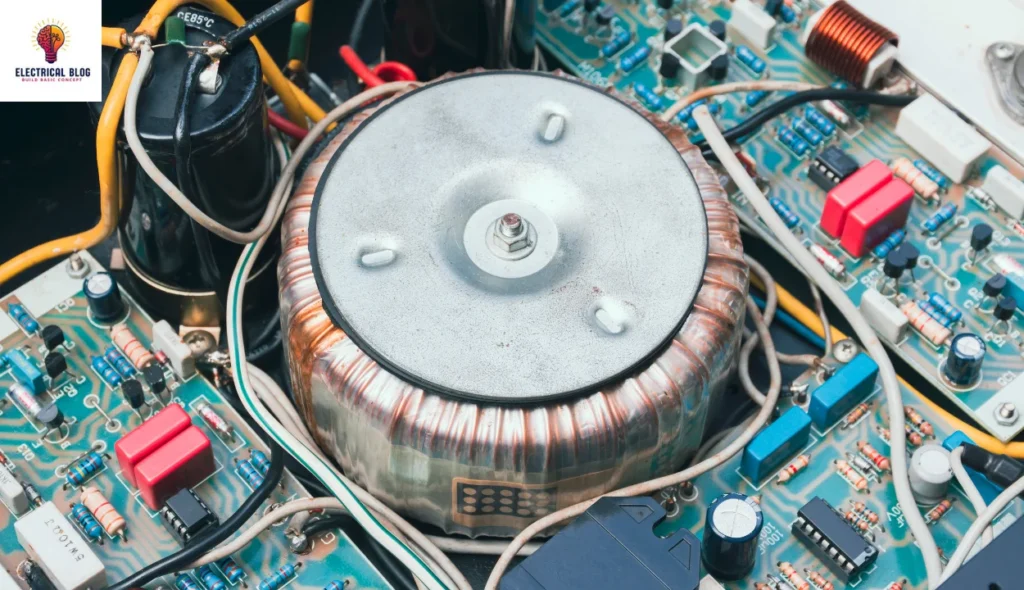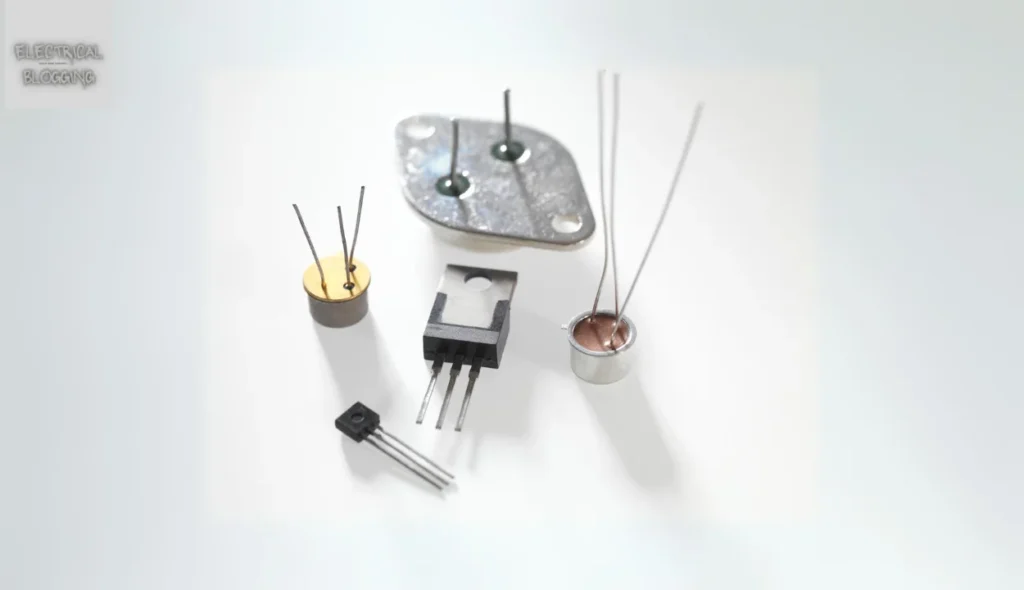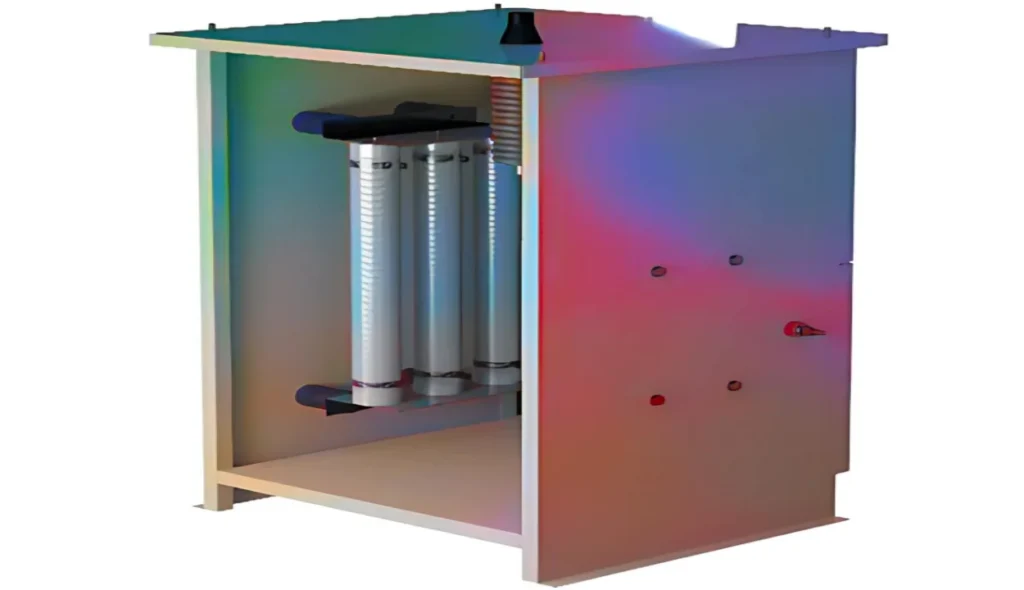Introduction
In the world of electrical engineering, toroidal transformers have become an integral part of various systems due to their high efficiency and compact design. Unlike traditional transformers, their unique circular shape allows for better isolation and minimal energy loss. These devices rely on electromagnetic induction to transfer power between the primary and secondary windings, which are magnetically coupled through a core.
The ability to operate both continuously and non-continuously at full load makes them ideal for demanding applications that require stable voltage and current regulation. With tightly wound coils and optimized capacity, they ensure seamless transfer of energy within an electrical circuit. Whether used in audio equipment, medical devices, or industrial components, toroidal transformers enhance efficiency while reducing interference.
What is a toroidal transformer?
A toroidal transformer is a type of power transformer with a circular core, designed to enhance efficiency by reducing winding losses and resistive losses. The primary and secondary coils are wound tightly around the core, allowing current to flow smoothly while transferring energy through electromotive force (EMF).
This unique shape results in shorter windings, minimizing interference and improving the overall performance. When the primary coil is energized, it induces a magnetic field that transfers energy to the secondary coil, ensuring stable operation. Due to these advantages, toroidal transformers are widely used in applications requiring compact, high-performance designs.
How Toroidal Transformers Work
A toroidal transformer is a passive device that transfers energy between circuits using a magnetic field, which induces an electromotive force. This process ensures electrical isolation while maintaining an unchanged frequency of the current. It can be employed to either step up or step down voltage, making it essential for various applications. Understanding these fundamental principles helps in optimizing efficiency and performance.
Faraday’s Law and Its Role in Toroidal Transformers
The working principle of a toroidal transformer is deeply connected to Faraday’s law, which explains how a magnetic field and magnetic flux interact with a conductor to generate an electromotive force. When an electric current flows through the primary winding, it induces a changing magnetic field, which then generates an electric current in the second conductor.
This process follows a physical law that establishes the relationship between a varying magnetic flux and the rate at which an electric current is induced. The transformer functions by allowing the alternating current (AC) to pass through the circuit, where the electromagnet creates a varying magnetic field, ensuring smooth energy transfer while keeping the frequency unchanged.
As the amplitude of the alternating current changes, the magnetic field continuously fluctuates, causing the induced electric current to match the original input. This effect is observed in electrical generators, where moving a conductor through numerous lines of magnetic flux can also induce electricity. This principle is exemplified in many electrical applications, proving how placing a conductor near a varying magnetic field can effectively transfer energy.
Basic Transformer Construction
A toroidal transformer follows a simple yet efficient design where the primary and secondary windings are wrapped around a magnetic core in a closed-loop structure. The power supply is connected to the primary winding, allowing electricity to be induced in the secondary winding through a magnetic field. Unlike conventional single-phase transformers, the toroidal design ensures better efficiency by reducing losses.
The number of turns in the coils determines the voltage transformation, following a predictable ratio (TR). This electrically coupled device operates as a linear system, where the output voltage can be predicted based on the relative changes in the windings, allowing for an increased or decreased secondary output as needed. You can also read transformer parts.
Toroidal Transformer diagram

Comparison Between Toroidal and Solenoid Cores
A toroidal core and a solenoid core serve similar functions in transformers, but their shapes and performance differ significantly. A solenoid is typically coiled in a straight direction, forming a rectangular or square structure, while a toroid has a circular profile with a ring-like shape. The coils in a toroidal transformer are wound uniformly around the core, creating a more compact and efficient design.
In contrast, solenoids often require additional laminated materials, such as EI or UI cores, to help manage the magnetic flux and prevent energy losses. Because of their closed-loop nature, a toroidal design eliminates external magnetic field leakage, making it more feasible for high-efficiency applications.
Another key advantage of a toroidal core is how it perfectly contains the magnetic flux, unlike a solenoid, where the flux may escape at the ends due to its finite length. This means conductors placed near a solenoid may experience unintended interference as the magnetic field passes through external regions.
In contrast, the uniformly winding in a toroidal transformer ensures that the magnetic flux remains within the core, eliminating the need for an extra return path. This was a reason why Faraday, when discovering induction, favored a toroidal structure over a solenoid for experiments. The configuration of a toroidal transformer makes it highly efficient, as its loop design naturally contains the magnetic field, improving performance without the need for additional conductive materials.
Advantage of the toroidal transformer
Higher Efficiency
A toroidal transformer is known for its high efficiency, often reaching 95% to 99% due to its near-ideal design. The magnetic flux remains concentrated within the toroid core, ensuring minimal leakage flux and strong coupling between the primary and secondary windings. This allows the input power to be efficiently converted into output power, with energy being evenly distributed across the entire coil. The efficiency is precisely defined by the ratio of power transfer, making toroidal transformers highly efficient for various applications.
Electromagnetic Shielding
A toroidal transformer provides excellent shielding by naturally containing magnetic flux, reducing EMI and preventing leakage. This makes it ideal for electronic devices with delicate components, as it minimizes interference in nearby circuits. In contrast, solenoid transformers are more susceptible to flux loss, often requiring extra materials to mitigate the issue, which increases cost and size.
Minimal Signal Distortion
A toroidal transformer helps maintain signal integrity by reducing signal distortion caused by stray magnetic fields. This is crucial for high-precision applications like audio systems, medical devices, measuring instruments, and power analyzers, where even minimal interference can be significant. Unlike other transformers, its low leakage flux prevents unwanted currents in nearby circuits, ensuring stable performance in low-power environments. This makes toroidal transformers ideal for sensitive systems that require accurate signals without noticeable distortions.
More Compact Construction
A toroidal transformer has a compact and efficient design, making it superior to EI cores and UI cores. Unlike single-phase transformers, which require additional material for return paths, a toroidal core is looped, eliminating the need for extra components. This results in better core utilization, as the entire magnetic flux path is used without limitations. In contrast, EI-cored and UI-cored transformers have yokes and limbs that do not carry the conductor coils, leading to higher material use and bulkier structures. When compared to traditional designs, toroidal transformers provide the same or better performance while being smaller and more space-efficient.
Better magnetic core materials
A toroidal transformer offers a key advantage by using superior materials that improve performance and efficiency. Instead of regular silicon steel, specialized options like nanocrystalline materials, amorphous alloys, and cobalt-based cores are chosen for their high permeability and low hysteresis. These materials help in reducing eddy current loss, ensuring minimal energy waste. This construction allows for a smaller core, which requires a lower amount of raw material while delivering enhanced results for specific applications.
Lower Off-Load Losses
A toroidal transformer is more efficient than a conventional solenoid-core design because it has lower off-load losses. Even in standby mode, it consumes less power and draws power only when connected to the secondary circuit. When compared to other transformers, it experiences fewer core losses, as it minimizes energy wasted in no-load conditions. This smart design reduces unnecessary magnetizing, making it ideal for low-energy applications. You can also read copper losses in transformer.
No Air Gap
A toroidal transformer is designed with an uninterrupted and continuous construction, completely eliminating air gaps. Unlike the EI core and solenoid designs, which have multiple gaps causing magnetic flux leakage and spreading, a toroidal core prevents these negative effects. This results in less noise, efficient energy transfer, and minimal interference with adjacent components. The absence of gaps also helps in better containment, reducing fringing and improving overall performance.
Low mechanical humming
A toroidal transformer is much quieter than EI and UI transformer cores due to its continuous design, which eliminates air gaps and reduces vibrations. In contrast, laminated iron cores with non-continuous structures often experience looseness over time, leading to mechanical humming and noise.
This issue is caused by magnetostriction, a phenomenon where the core material vibrates as it reacts to magnetization. The stable structure of toroidal transformers prevents unnecessary impact between core parts, helping to minimize unwanted sound. Since they are not laminated, they avoid the issues commonly associated with adjacent components in other transformer types.
Lower Heat Generation
A toroidal transformer operates with higher efficiency, meaning it generates less heat compared to traditional designs. Electrical energy losses from eddy currents, hysteresis, and copper resistance are minimized, reducing the need for cooling systems. In larger transformers, an oil cooling system is required for dissipating heat, while small electronic devices rely on heat sinks. However, due to its high efficiency, a toroidal transformer can function without additional metal cooling components, making it ideal for compact applications.

Disadvantages of Toroidal Transformers
Expensive Construction
A toroidal transformer is more costly to produce because its winding process is complex and takes more time. Unlike EI and UI transformers, which have easier access to limbs and can be assembled from disassembled E and I pieces, a toroidal core requires each conductor coil to be wound individually. This design does not support mass production, which contributes to higher costs and increases manufacturing costs compared to traditional transformers with reduced material usage.
Limited Use in Multi-Phase Applications
A toroidal core is predominantly used in single-phase applications, as three-phase designs are less common due to their complexity and cost. Unlike core-type and shell-type transformers, which feature three limbs or five limbs with a common yoke, a toroidal transformer requires individual toroidal cores for each phase. This increases production challenges and the need for additional material, making them less cost-effective for industrial and commercial use. In contrast, EI and UI core types allow for coils to be wound on adjacent limbs, which reduces the overall profile and improves compactness in three-phase setups.
Since toroidal transformers do not easily streamline the configuration for three-phase systems, they remain limited to special applications where their high efficiency is prioritized over ease of production. The winding process for three-phase toroidal cores is also more difficult, requiring precise alignment and increasing manufacturing time. This makes conventional core designs like EI and UI models more popular in the market, as they offer a simpler and more scalable solution for high-power applications.
Higher Inrush Current
When a toroidal transformer is first powered up, it experiences a strong inrush current due to its efficient core construction and reduced losses. The initial surge happens because the primary circuit draws a higher magnitude of current before stabilizing. This spike in current can impact the secondary circuit, making it crucial to manage properly. Unlike other transformers, toroidal designs often require additional precautions to prevent damage.
Uncontrolled inrush current can lead to significant issues, such as damaged devices or even complete transformer failure in severe cases. If not properly addressed, the sudden magnitude of current can trip circuit breakers and blow fuses, disrupting system operation. Ensuring reliable operation requires careful management and protection measures to prevent such risks. Keeping the power source stable and ensuring connected devices are safely connected helps reduce unwanted failures.
To protect against these effects, passive inrush current limiters like NTC thermistors can be employed. These components have high resistance when cold, helping to limit the initial surge and allow normal current flow as the resistance decreases. The choice of Negative Temperature Coefficient materials plays a key role in balancing cost, reliability, and performance requirements. Using electrical resistors in the associated circuitry ensures better system stability.
For more advanced protection, active devices are an effective but expensive option. These highly sensitive solutions work by switching and controlling the high incoming current to limit magnitude and prevent potential damage. Though they increase the overall size of the system, they help in reducing risks in electrical systems and mechanical systems. Ensuring system reliability through the right balance of passive and active protection is essential in managing inrush current in toroidal transformers.
Applications of Toroidal Power Transformers
Toroidal power transformers are widely used in electronic circuits due to their compact size, making them ideal for computers, inverters, and various devices. Their hum-less operation is beneficial for audio system setups, including televisions, amplifiers, and other toroidal models where noise reduction is essential. In the medical industry, these transformers are preferred for medical instruments and critical equipment, as they provide superior efficiency, low leakage currents, and reliable operation.
Their lightweight structure allows for easy integration into systems with space constraints, and their design supports medical systems that require noiseless performance under weight limitations. These considerations make them particularly useful for high-precision applications.
Conclusion
A toroidal transformer is a highly efficient type of electrical transformer with a donut-shaped core where the primary and secondary windings are wound around the entire surface of the toroidal core. It works by using a magnetic field to induce an electromotive force, allowing it to transfer electrical energy from one circuit to another. Unlike rectangular transformers, which have a helically wound transformer core like a solenoid with conductor coils arranged in a straight direction, toroidal models offer higher efficiency, minimal signal distortion, and low mechanical humming.
Their more compact construction also provides inherent EMI shielding, low heat, and small off-load losses, making them ideal for sensitive applications. However, they come with limitations such as challenges in multi-phase systems, higher inrush current, and more expensive construction, which must be considered when choosing the right electrical transformer for specific needs.



